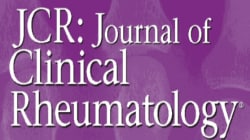
“Emerging evidence suggest an impaired endocannabinoid activity in the pathophysiology of binge eating disorder (BED). Herein, we investigated whether endocannabinoid tone could be modified as a consequence of dietary-induced binge eating in female rats.
For this purpose, brain levels of the endocannabinoids anandamide (AEA) and 2-arachidonoyl glycerol (2-AG), as well as two endocannabinoid-like lipids, oleoylethanolamide (OEA) and palmitoylethanolamide (PEA), were assessed in different brain areas involved in the hedonic feeding (i.e., prefrontal cortex, nucleus accumbens, amygdala, hippocampus, and hypothalamus).
The brain density of cannabinoid type-1 receptors (CB1) was also evaluated. Furthermore, we determined plasma levels of leptin, ghrelin, and corticosterone hormones, which are well-known to control the levels of endocannabioids and/or CB1 receptors in the brain.
To induce binge eating behavior, rats were subject to an intermittent and limited access to a high fat diet (HFD) (margarine). Three experimental groups were used, all with ad libitum access to chow: control (CTRL), with no access to margarine; low restriction (LR), with 2 h margarine access 7 days/week; high restriction (HR), with 2 h margarine access 3 days/week. Bingeing was established when margarine intake in the HR group exceeded that of the LR group.
Our results show that, compared to CTRL, AEA significantly decreased in the caudate putamen, amygdala, and hippocampus of HR group. In contrast, 2-AG significantly increased in the hippocampus while OEA decreased in the hypothalamus. Similar to the HR group, AEA and OEA decreased respectively in the amygdala and hypothalamus and 2-AG increased in the hippocampus of LR group. Moreover, LR group also had AEA decreased in the prefrontal cortex and increased in the nucleus accumbens. In both groups we found the same reduction of CB1 receptor density in the prefrontal cortex compared to CTRL. Also, LR and HR groups showed alterations in both ghrelin and corticosterone levels, while leptin remained unaltered.
In conclusion, our findings show a modified endocannabinoid tone due to margarine exposure, in several brain areas that are known to influence the hedonic aspect of food. Even if not uniquely specific to binge eating, margarine-induced changes in endocannabinoid tone could contributes to the development and maintenance of this behavior.”
https://www.ncbi.nlm.nih.gov/pubmed/29456490
https://www.frontiersin.org/articles/10.3389/fnins.2018.00040/full





 “Vismodegib is a hedgehog inhibitor drug indicated for metastatic or locally advanced basal cell carcinoma (BCC) that is not fit for surgery or radiation therapy.
“Vismodegib is a hedgehog inhibitor drug indicated for metastatic or locally advanced basal cell carcinoma (BCC) that is not fit for surgery or radiation therapy.
 “Cannabis is a widely used drug in the United States, and the frequency of cannabis use in the human immunodeficiency virus (HIV)–infected population is disproportionately high. Previous human and macaque studies suggest that cannabis may have an impact on plasma viral load; however, the relationship between cannabis use and HIV-associated systemic inflammation and immune activation has not been well defined.
“Cannabis is a widely used drug in the United States, and the frequency of cannabis use in the human immunodeficiency virus (HIV)–infected population is disproportionately high. Previous human and macaque studies suggest that cannabis may have an impact on plasma viral load; however, the relationship between cannabis use and HIV-associated systemic inflammation and immune activation has not been well defined.


